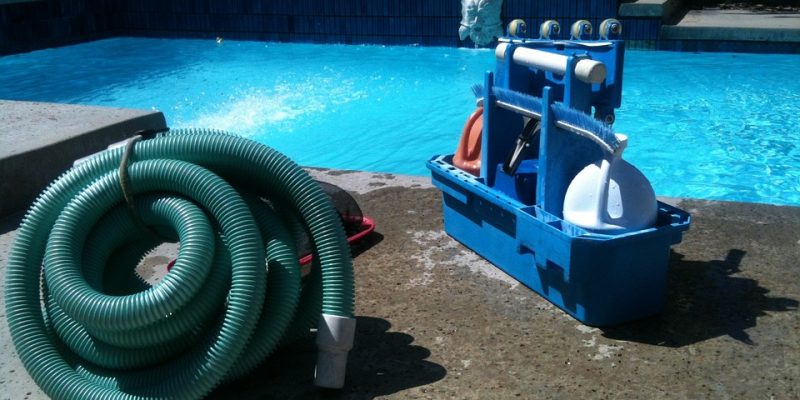Maintaining a pool can be a daunting task for many of us, especially if we don’t have the funds to hire someone to come and do it for us. Unfortunately, with swimming season quickly approaching, now is the time to make sure our pools are in tip-top condition! Thankfully, there are some easy steps that anyone can follow so one can maintain their own pool at home this summer. In this blog post, we provide readers with an easy-to-follow guide on how to maintain a pool right from the comfort of your very own backyard.
With our step by step explanation approach, you’ll be able to take on those repairs without paying out lots of extra money and potentially ruining your summer’s fun in the process. So pour yourself some iced tea (or beer), put away all distractions, and get ready as we demonstrate how simply taking care of your pool really can be!
Testing and balancing chemical levels
Maintaining a pool isn’t just about looks, it’s also about health! Regular testing and balancing of your chemical levels is key. Checking pH, alkalinity and chlorine levels can help make sure that when you’re ready to plunge in, the water will be balanced and safe. Plus, keeping an eye on the chemicals in your pool can help avoid damage to the filters, pump, and other parts of the pool due to excess acid or too-strong chemical treatments. A good home guide on maintaining a pool should always include instructions on how to measure and adjust those levels, so make sure you take your time and follow the steps carefully! Usually, you can purchase a testing kit from your local pool supply store or online.
Cleaning the pool
Regular cleaning and brushing of the pool is important to keep the water clear, inviting and free of debris. This includes removing leaves, twigs and other floating particles as well as scrubbing down walls and floors. Additionally, depending on the size of your pool, you may want to invest in a pool cleaner—either manual or automated—to save time and energy. Manual pool cleaners are cost effective, require little maintenance, and can easily be stored away when not in use.
However, an automated pool cleaner will provide more thorough cleaning results and can keep your pool spotless with minimal effort required from you. Ultimately, deciding what type of pool cleaner is best for you depends on your lifestyle as well as how much work you’re willing to do!
Checking for leaks
Checking your pool for leaks is an important part of maintaining your pool – and luckily, it’s a lot easier than you might think! All you need is to use a simple dye test – and you don’t need any special tools or equipment. Simply add some dye to the water in and around the returning jets, wait for at least ten minutes or so and then look for evidence of the dye traveling away from the spot. If it looks like the dye has dispersed beyond where it was added, then there’s probably a leak somewhere that needs repair! Regularly checking your pool for leaks can save on both water and money in the long run – so get out there and start testing!
Filter maintenance
Another important tip for pool maintenance is filter maintenance. You need to learn how to properly maintain your filter and when to backwash it or use a filter aid. Maintaining your filters will ensure that the water stays clean, helping you maintain a healthy pool all summer long. Keeping up with this step can also save you money in repairs – as a clogged filter puts an extra strain on other parts of the system – and can help extend the life of your pool. Regularly cleaning and caring for your filters will give them a much longer lifespan, meaning you won’t have to replace them as often. That’s why learning how to properly maintain these components is so essential!
Winterizing the pool
Winterizing a pool as the temperatures drop can be daunting, but needn’t be overwhelming. Whether you do it yourself or hire professionals, the necessary steps are essentially the same: remove debris from the water, inspect and clean filter systems, balance the pH levels, lower the water below skimmers and jets, and install a winter cover over the entire pool. Thankfully, you don’t have to take this project on alone; our guide takes you step-by-step through what it takes to effectively winterize your pool in order to make sure it’s in pristine condition come spring time!
Pool covers
Pool covers can be a great way to maintain your pool and extend its lifespan by minimizing heat loss, preventing evaporation, and keeping out debris. Having a pool cover on your pool can help you save time and money in the long-run. For starters, using a pool cover reduces heat loss which saves you money on heating costs. In addition, it prevents water evaporation – double win! You’ll thank yourself for having a quality pool cover when you start seeing how much less cleaning and refilling you need to do for the same amount of enjoyment. You also don’t have to worry about undesirable leaves or debris entering your pristine waters – just keep it covered up! Investing in a quality pool cover is an investment into the longevity of your beloved family swimming spot.
Maintaining a pool is essential for its longevity and to keep it looking great all summer long. Whether you hire professionals or DIY, there are several important steps that need to be taken in order to properly care for your swimming spot. From checking the water levels and testing for leaks, to regularly cleaning filters and winterizing when necessary, these tips will help ensure your pool stays healthy year-round.
Additionally, investing in a quality cover can save time on maintenance as well as money spent heating the water – so why not give yourself peace of mind by taking this extra step? With just few simple steps each season, you’ll have an inviting oasis ready whenever friends come over or family wants to cool down!






















